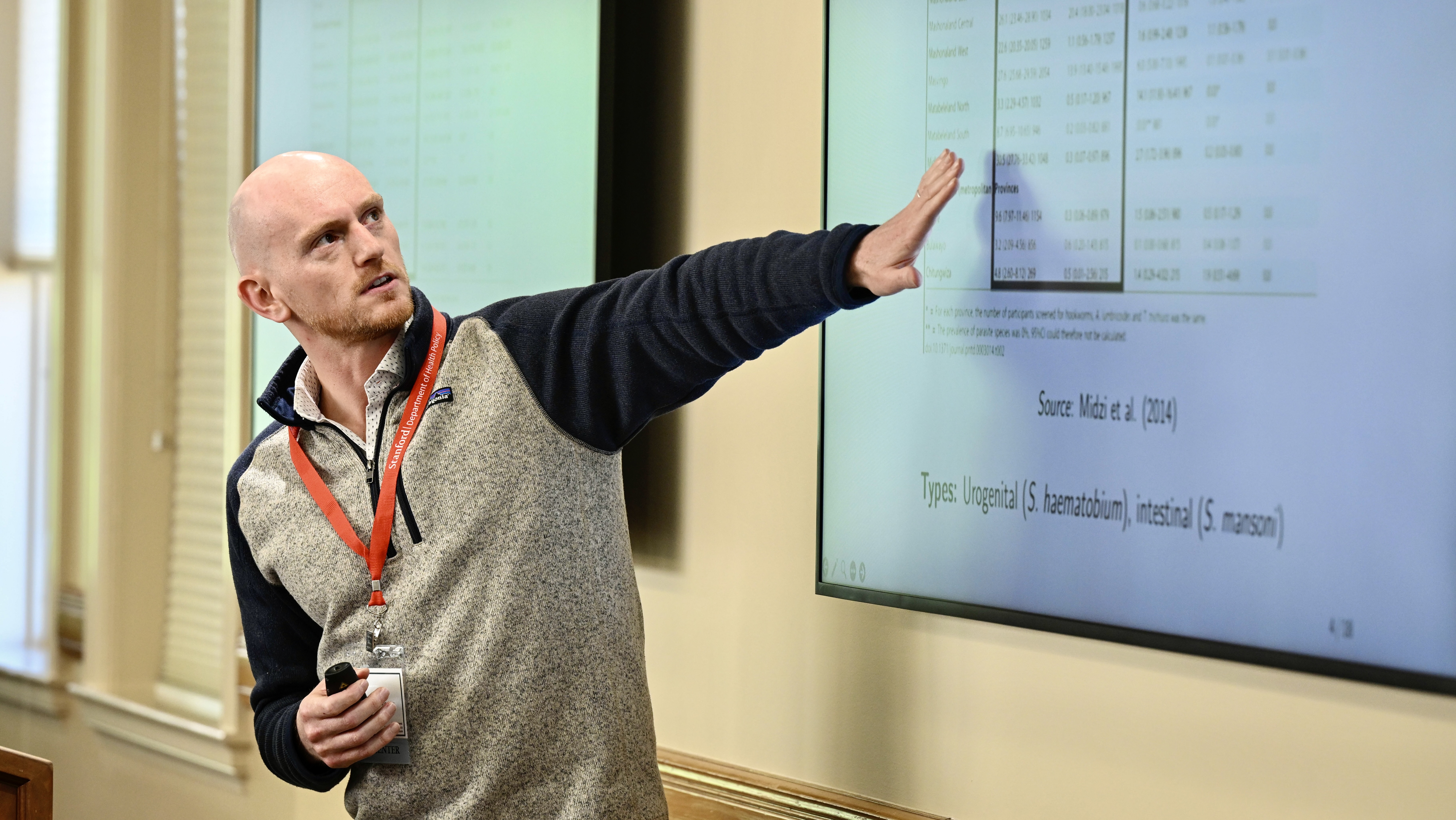Research
 Photo credit: Rod Searcey/Stanford Health Policy
Photo credit: Rod Searcey/Stanford Health Policy
Breaking Intergenerational Cycles of Poverty and Poor Health
Disease, Disparities, and Development: Evidence from Chagas Disease Control in Brazil (with Eduardo Montero) [NBER Working Paper 33518]
Poor, non-white Latin Americans disproportionately suffer from Chagas disease, a neglected tropical disease that causes acute symptoms and chronic heart problems decades later. We show that Brazil's post-1983 vector control campaign raised GDP per capita and lowered Gini coefficients in treated municipalities within two decades. Eliminating childhood exposure decreased racial income inequality in adulthood and increased literacy rates in the next generation. The primary mechanism was improved adult health, which also reduced public spending on cardiovascular disease hospitalizations. Controlling illnesses afflicting the poor, particularly those with chronic effects, can thus foster inclusive growth while strengthening fiscal health in developing economies.
Rags to Rags: The Effects of Ending Cash Transfers Across Three Generations in Victorian Britain (with Jennifer Mayo) [Funded by NIH grant R03HD117092]
The 1834 ("New") Poor Law drastically cut the income support provided to 15% of the English and Welsh populations at an annual cost of 2% of GDP. We show that in 1861, women with greater childhood exposure to declines in poor relief spending had more children and lower labor force participation rates (consistent with having been married off at younger ages), men were more likely to be in agricultural or service occupations, and their children were less likely to be in school. Linking these sons to the 1891 census, we find no effects on their occupational categories, but their children were also less likely to be in school. Our results highlight the importance of incorporating effects across multiple generations in cost-benefit analyses of social programs.
Eradicating the Disease of the Empty Granary: Health, Structural Transformation, and Intergenerational Mobility in Ghana (with Conor Owen Carney)
Guinea worm disease (GWD) was known as "the disease of the empty granary" because it often incapacitated adult farmers for weeks during peak agricultural seasons. Using a difference-in-differences design, we show that its post-1989 eradication from Ghana increased agricultural productivity and women's paid employment and decreased child marriage rates. In the long run, adults who were children around 1990 are more likely to hold formal employment outside of agriculture, be literate, and live in urban areas. We also find spillover effects onto other generations: their sons' literacy rates increased and their mothers are more likely to still be alive. These results show that adult health improvement—especially those resulting from neglected tropical disease control—can be an important input into structural transformation, the loosening of intergenerational poverty traps, and healthy aging in the developing world.
Deworming as HIV Prevention for Young Women: Evidence from Zimbabwe
Nearly one-third of new HIV infections in Sub-Saharan Africa occur in young women, largely because their partners are from high-prevalence groups. Since marriage market matching is shaped by human capital, which is influenced by childhood health, can deworming girls lower their chances of contracting HIV as young women? To answer this question, I study Zimbabwe’s school-based deworming program (2012-17), which substantially reduced rates of urogenital schistosomiasis. Using a difference-in-differences design, I find that 3 years after it began, young women’s HIV prevalence fell 2.7 percentage points (p.p., 44 percent) more in high-schistosomiasis districts. Human capital’s effects on marriage market matching appear to explain the results: young women’s secondary school attendance rose 6.0 p.p. (9 percent), and they had less age-disparate and fewer sexual partners. These results show that a cheap treatment for a common childhood disease can also slow an expensive and deadly pandemic, substantially increasing deworming’s estimated benefits.
Historical and Cultural Roots of Hardship and Exclusion
Circular Migration, Marriage Markets, and HIV: Long-Run Evidence from Mozambique [AEHN Working Paper 76, under revision]
I study the impacts of exposure to one of Africa's largest circular migration flows using an arbitrary border within Mozambique that, from 1893 to 1942, separated areas where young men were either pushed into or prevented from migrating. Counterintuitively, but consistent with historical narratives and theoretical predictions, HIV prevalence is lower today on the former migrant-sending side of the border while living standards are similar. The evidence suggests that age gaps between partners—which promote HIV's spread—have long been smaller in this region, as circular migration allowed much younger men to afford the requisite marriage payments to brides' families.
Crimes against Nature: The Colonial Roots of Homophobia in Sub-Saharan Africa (with Teevrat Garg)
Anti-LGBTQIA+ sentiment and laws are severe and pervasive across Sub-Saharan Africa. A common explanation is that homosexuality is antithetical to the region's cultures, but there is evidence of tolerance for homosexuality across precolonial Africa, suggesting that this discrimination was instead a product of the colonial period. We test this hypothesis by comparing former colonies of Portugal—which did not criminalize homosexuality in its overseas empire until the eve of decolonization and did not task missionaries with "civilizing" Africans through education and moral regulation—to neighboring countries. Using a regression discontinuity design, we show that acceptance of homosexuals increases significantly just inside former Portuguese colonies, but there are no effects on sentiments toward other out-groups. Preliminary evidence suggests that our results arose from the differences in missionary activities. By identifying the roots of the exclusion and persecution of LGBTQIA+ individuals across Sub-Saharan Africa, our results can serve as a first step toward ending these harmful practices.
